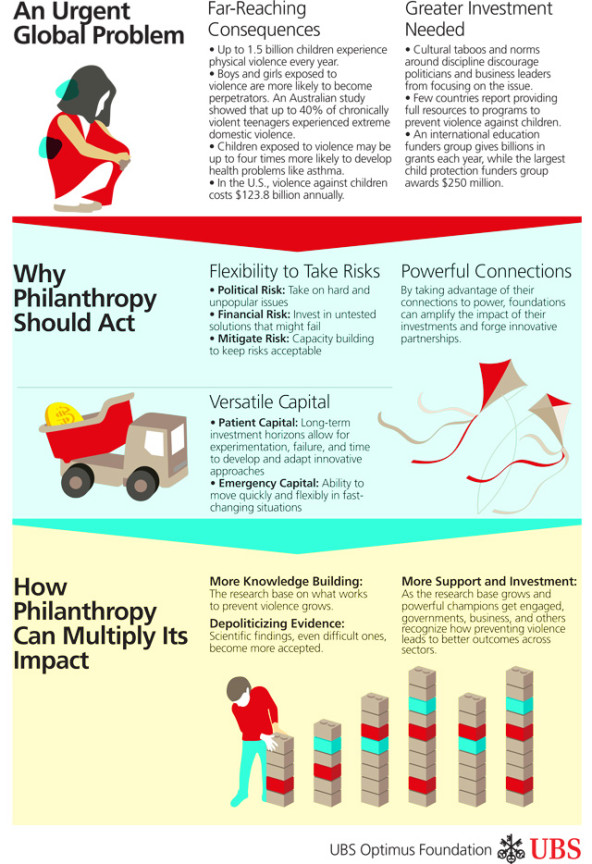A few years ago, a coalition of 12 funders came together to support Girls Not Brides, a global partnership of civil society organizations committed to ending child marriage. It was a gutsy move. Addressing child marriage meant confronting cultural taboos. And politicians, business leaders, and other public figures often have powerful incentives, such as the demands of voters and shareholders, to favor easier and more “popular” issues like education or health. Nonetheless, these funders took a risk, and it paid off. Before they joined forces against child marriage, the cause had not gotten much support from global opinion leaders. Now it’s a priority.
More funders should follow their lead. Philanthropists shouldn’t be afraid to act boldly and leverage their flexibility to take on big, difficult, and politically sensitive issues that government, nonprofits, multilateral organizations, and other actors are unable or unwilling to address. That may seem like an obvious statement, but it’s not. Here’s why: Over the past few decades, many foundations have joined the strategic philanthropy movement, taking steps to clarify their goals and strengthen accountability by measuring the outcomes of their efforts. Those moves make good business sense, but as more and more funders home in on results, we fear they may lose sight of their unique abilities to use risk-taking and experimentation to spur social change.
Consider those abilities: Funders can typically assume financial and political risks more readily than governments, multilateral organizations, and the private sector. That’s because they tend to have versatile, “patient” capital with long-term investment horizons, which allows them to risk failure in supporting new models, and to take time in developing and adapting innovative approaches. (A classic example of how foundations can use patient capital to support long-term change is the Ford Foundation’s help launching Grameen Bank in 1976; founder Muhammad Yunus received the Nobel Peace Prize in 2006 for pioneering microcredit and microfinance.)
Through their personal networks, funders also have an advantage when it comes to connecting capital and expertise from diverse sources. By tapping their personal networks, funders can forge innovative partnerships that enhance individual efforts. They can, for example, bring together the disparate activities of experts in intersecting fields such as early childhood development, academics, multi-lateral agencies, governments, and global NGOs.
Are you enjoying this article? Read more like this, plus SSIR's full archive of content, when you subscribe.
It’s important to remember that acting boldly does not mean acting imprudently. It is possible to think long-term while still measuring progress against shorter-term goals. Funders can avoid unnecessary risk by practicing due diligence to ensure that the organizations they support have sufficient capacity to make effective use of limited resources. They can also build capacity for grantees by providing a broad range of organizational support such as strategic and financial planning; the development of results-based programming; and strengthening communications, advocacy, and fundraising.
At the UBS Optimus Foundation, we are trying to do just that as we balance our desire to realize measureable results with our mission to end violence against children. While the movement to prevent child marriage—one form of such violence that affects millions of girls each year—has gained momentum, violence against children in general has not become a high political priority. We believe this area is ripe for leveraging the advantages of philanthropy.
Research has proven that violence against children is preventable, and yet the knowledge base remains relatively thin on what works and what doesn’t. We urgently need innovation to surface more successful approaches. The ability to be patient can allow for the exploration of innovative ideas such as incorporating violence prevention into early childhood development programs, linking interventions to prevent gender-based violence to violence against children, and adapting a "disease control model" for interrupting violence.
 We need bold philanthropy to combat complex, politically sensitive issues like violence against children.
We need bold philanthropy to combat complex, politically sensitive issues like violence against children.
By combining support for innovative approaches with appropriate evaluation strategies, philanthropy can advance progress. It can expand the body of knowledge and experience around an issue to a point where governments and other stakeholders find that the risk of joining the movement has fallen to an acceptable threshold.
Funders can also aid in de-politicizing scientific findings by bringing together unexpected partners from different fields to generate greater investment and compel political change. In support of evidence-based violence prevention strategies, we recently co-hosted a meeting led by the University of Cambridge and the World Health Organization that convened global experts to discuss ways to meet an ambitious goal of reducing violence by 50 percent over the next 30 years. Their recommendations will feed global conversation around strengthening health systems and more towards that end.
Philanthropy’s patient capital, funding versatility, political risk-taking abilities, and powerful connections are significant advantages that we shouldn’t be afraid to leverage. Instead, funders should embrace the challenge of taking on big, difficult, and politically sensitive problems that government, nonprofits, multilateral organizations, and other actors are unable or unwilling to address. It’s one of the most important ways that they can contribute to social change.
Support SSIR’s coverage of cross-sector solutions to global challenges.
Help us further the reach of innovative ideas. Donate today.
Read more stories by Maya Ziswiler & Patricia Lannen.

